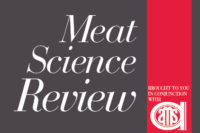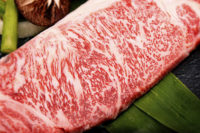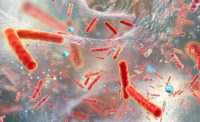Meat Science Review
Validating meat color-measurement devices

Consumers tend to use color for judging meat quality and safety, and oftentimes color is a critical component of their purchase decision. Therefore, industry considers meat color as one of the most important considerations for determining shelf life of products. Monitoring color either visually or instrumentally is routinely used in meat science research and industry settings to evaluate shelf life and consumer acceptability. The HunterLab MiniScan EZ 4500 (HunterLab) colorimeter is widely used as a standard for objectively measuring meat color. This device can collect tristimulus values of CIE L* (lightness), a* (redness) and b* (yellowness) for color measurements based on the light reflectance from the meat surface. While the HunterLab colorimeter serves as an accurate measure of meat color, it is relatively expensive and bulky. The Nix Pro Color Sensor (Nix) colorimeter is a relatively new, less expensive and smaller handheld device that can capture the CIE L*, a*, b* values which can be downloaded to a smartphone app. But only limited research has been performed to compare the efficiency of these colorimeters for measuring beef color. Therefore, the objective of this study was to investigate the capabilities of the Nix colorimeter as an additional resource for objective fresh beef color measurements.
Two hundred A maturity beef carcasses were evaluated for color measurements at a large-scale beef harvest facility. The longissimus dorsi muscle (rib eye) from one side of each carcass was sampled using the HunterLab and Nix colorimeters. Carcasses were allowed approximately one hour to bloom after being separated between the 12th and 13th rib prior to color measurements. The process of blooming (oxygenation of myoglobin) helps stabilize the meat color. Three (technical replicate) scans were obtained using the HunterLab colorimeter (illuminant A and 10° standard observer) and the mean readings were recorded. Following the HunterLab color measurements on each carcass, the Nix was used to obtain a series of independent technical replication scans (3, 5, 7 and 9) with illuminant A and 10° standard observer as well. For each carcass the mean reading of three scans from the HunterLab was analyzed individually against each of the mean readings from the components of the Nix scanning series (3, 5, 7 or 9 scans). Correlation and mean differences (HunterLab color value minus Nix color value) in color measurements were used to determine whether a significant agreement persists between the two colorimeters, as well as determine the number of scans necessary to accurately record color using the Nix.
Results from this study indicated significant agreement for correlation and mean differences between the colorimeters for all the color parameters (L*, a*, b*) across all Nix scanning series (3, 5, 7 or 9 scans). Lightness (L*) values were highly correlated and similar for all the Nix scanning series. Mean differences for L* values determined three scans from the Nix displayed the smallest difference (-0.91), denoting the Nix reads only, on average, 0.91 L* units higher than the HunterLab. Correlation values for a* (redness) were also highly correlated between the HunterLab and Nix. Despite this, a* correlations displayed a greater spread in the coefficients when compared with L* values, with the highest correlation coming from three scans with the Nix. Similar to L*, three scans with the Nix for a* values represented the smallest mean difference (-1.68) between colorimeters. Correlations for b* (yellowness) values were comparable to a* value, with three scans from the Nix demonstrated the highest correlation with the HunterLab. Among the three-color parameters (L*, a*, b*), the mean difference between the two colorimeters were lowest for b* values across all of the Nix scanning series.
Although these colorimeters are not equivalent, the Nix could be adequate for objectively measuring beef color and is comparable to the HunterLab. The color readings using Nix were highly correlated and comparable with the HunterLab irrespective of the number of scans. Our results showed that three replicate scans using the Nix was sufficient since it had a high correlation with L*, a* and b* values, along with the lowest mean difference between colorimeters for L* and a* values across all Nix scanning series. Thus, the Nix provides an opportunity for a less expensive, more mobile, multipurpose device for objectively measuring meat color. NP
Looking for a reprint of this article?
From high-res PDFs to custom plaques, order your copy today!





